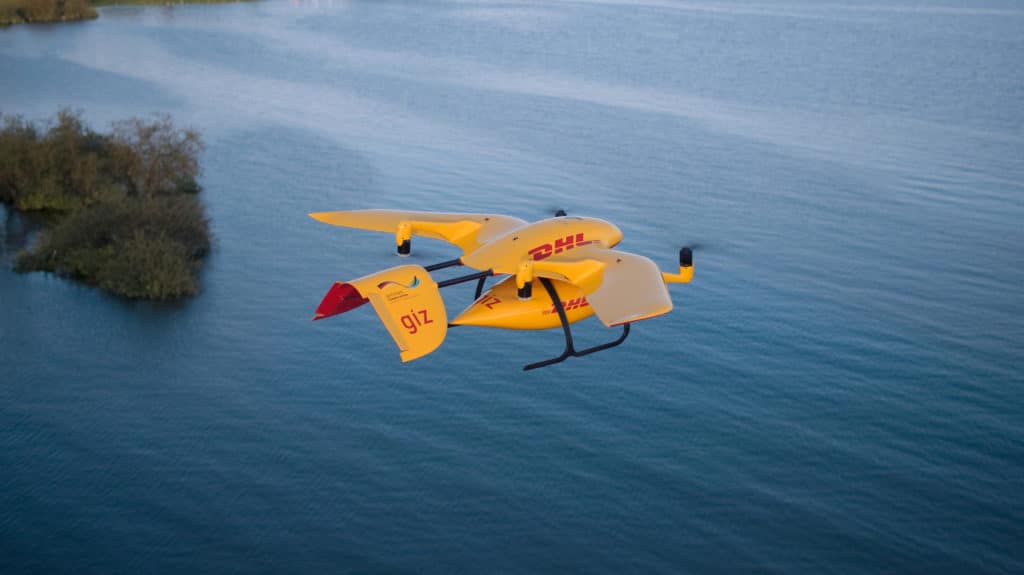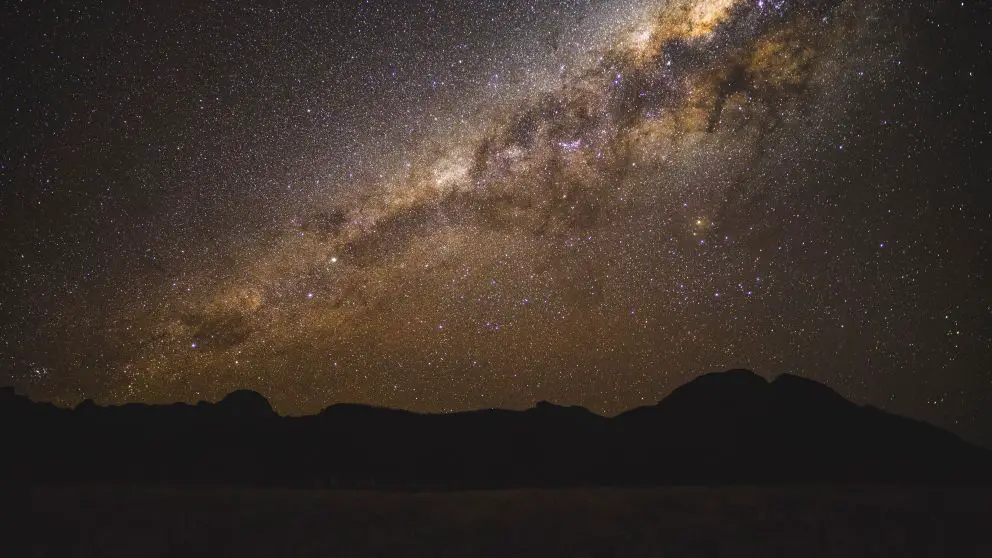First you need to understand that not all drones come with cameras, and some operations need specific sensors to be purchased separately. In this article we’ll look at the starting costs for the drone itself. Additional equipment will be included where relevant.
Are you thinking about starting a drone business or expanding your current business to include drones? We’ll cover some of the costs associated with adding a professional-grade commercial drone to your fleet.
Whether it’s basic quadcopters or complex eVTOL (Electric Vertical Take-off & Landing) drones, I’ve worked with most of them in my career. I have my favourites… but I’ll do my best to give you an objective breakdown.
How Much Does a Professional Drone Cost?
Entry-level professional drones generally cost around $2,500, intermediate drones cost up to $20,000, while advanced drones can be upwards of $100,000. The biggest and complex drones like the Schiebel Camcompter S-100 can cost in the region of $400,000.
| Professional Requirements | Price Range (approx min.) | Price Range (approx max.) | Drone Example | Example Price. |
| Entry-level | $2,000 | $4,500 | DJI Mavic 3 | ~$2,500 |
| Intermediate | $10,000 | $20,000 | DJI Matrice 350 | ~$12,000 |
| Advanced | $10,000 | $100,000 | WingtraOne | $20,000+ |
| Complex | $100,000 | $4,000,000 | Schiebel Camcopter S-100 | $400,000 |
Don’t forget that not all drones are used the same, they have different purposes and limitations.
We’ll cover some of these drones in further depth to understand what they cost and what you can expect to use them for.
Just to give you a good idea of what to expect as you begin your professional drone journey and progress to larger platforms and more complex tasks, we’ll cover 2 drones for each experience level.
Entry Level Drones
DJI Mavic 3
The DJI Mavic 3 is one of the best starter drones for professional applications. It is an affordable entry platform to get you started and is great value.

The drone is small and compact due to its foldable design, you can carry it in a backpack or a briefcase.
As it only weighs 900g, in countries like Australia, you can fly this drone without a Remote Pilot License (RePL) for commercial purposes.
| Price | ~$2,000 (drone only) | ~$2,500-4,000 (including accessories and extra batteries) |
| Weight | 895 grams |
| Max Flight Time | 46 mins |
| Sensor | RGB Camera – 4/3 CMOS | 20MP Still Image | 5.1K 50p Video |
| Application | Photography, Videography, Basic Orthomosaics |
Notes
- Despite its small airframe and light weight, the wind tolerance of the Mavic 3 is very high – The manufacturer specs is listed as: 12m/s (23knots or 43mph)
- The drone has an impressive flight time of up to 46 minutes on a single charge. This extended flight time significantly improves data capture time
- The DJI Mavic 3 Classic drone features a dual-camera system, which includes a 20MP wide-angle camera and a 12MP telephoto camera. This allows for versatile shooting options, from wide landscape shots to detailed close-ups. The drone also supports 5.1K video recording, providing high-quality footage.
Autel Evo II Pro V3

An alternative to the DJI brand of entry-level drones is the Autel Evo 2 Pro V3.
The Autel EVO 2 Pro V3 drone is a tool for taking high-quality photos and videos. It can record in 6K and take 20-megapixel photos. It also has settings that let users control how much light gets in, which helps in different lighting conditions.
Three important things about the Autel EVO 2 Pro V3 drone are:
- The drone has a feature called Moonlight Algorithm 2.0. This helps it take clear photos even when it’s dark.
- The drone uses something called SkyLink 2.0 technology. This helps keep a strong connection between the drone and the controller.
- Obstacle avoidance in all directions. This helps it avoid crashing into things.
| Price | ~$2,500 (drone only) | ~$3000-4000 (including accessories and extra batteries) |
| Weight | 1.2 kilograms |
| Max Flight Time | 40 mins |
| Sensor | RGB Camera – 1” CMOS | 20MP Still Image | 5K 25p Video |
| Application | Photography, Videography, Multispectral Mapping |
Notes
- The drone comes with Autel’s Moonlight Algorithm 2.0, which provides additional noise reduction for improved image quality.
- The drone is equipped with front, rear, left, right, top, and bottom binocular vision sensing systems that use image data to calculate the distance between the aircraft and potential obstacles.
- The drone features SkyLink 2.0 technology, which provides a reliable and stable connection between the drone and the controller, even in challenging environments with high interference or signal loss.
Intermediate Level Drones
DJI Inspire 3

The DJI Inspire series is the first step into customizable applications. The drone is generally sold without a sensor so you’ll need to consider the additional costs.
However, this leaves the possibilities very open as to the applications and sectors your business can expand into. DJI sells a range of multispectral cameras for various applications.
The DJI Inspire 3 is the long awaited successor to the much loved DJI Inspre 2.
This aircraft is designed and marketed as a film-making platform. It doesn’t exclude it from the typical applications like photogrammetry etc. But at this pricepoint, it is specifically providing value to cinematographers.
Unless you have a range of services, predominantly film-making, then we wouldn’t recommend this considering it’s price range. For those who are on a tighter budget but are still looking for the flexibilty that this platform provides, The DJI Inspire 2 is still available in a few places. Alternatively, go for a M300.
| Price | ~$17,000 (drone only) | $1,000+ for payloads |
| Weight | ~4 kilograms (includes gimbal camera, two batteries, lens, PROSSD, and propellers) |
| Max Take-off Weight | 4.3 kilograms |
| Max Flight Time | 25 mins |
| Sensor | None (RGB, zoom, multispectral sensors sold separately) |
| Application | Photography, Videography, Multispectral Mapping, Inspection, Photogrammetry, 3D Modelling |
Notes
- As this is still new, you will be somewhat limited to DJI offerings for payload choice
- As typical with the Inspire range, there is a dual operator function which allows a primary operator to pilot the drone, and a secondary operator to control the camera indepently
- There are multiple flight modes, specifically designed to enhanced the film-making experience and process
DJI Matrice 350
The main alternative from the Inspire series is the complete flexibility of the Matrice 300 series. This drone is not limited to the DJI range of products. There are a range of mounts and attachments that allow this drone to carry a variety of payloads.

This aircraft is considered the workhorse of the drone industry. it is used across a variety of sectors, especially in industrial settings like inspection or mapping.
The DJI Matrice 350 series is a high-performance drone line designed for commercial and industrial applications. These drones are known for their robustness, versatility, and advanced features that cater to a wide range of professional needs.
The DJI Matrice 350 is the most recent release of the series. It improves on an already comprehensive drone. It has a flight time of up to 55mins now and also has an improve IP rating. The improvements are incremental and to some degree are just quality of life improvements so I wouldn’t go upgrading immediately.
It’s predecessor is still a viable option for those looking to save a bit on costs. The M300 is still a dominant force across many companies. Some companies have a fleet of 20+ M300s, and I don’t see them upgrading any time soon.
| Price | ~$12,500+ (drone only) |
| Weight | 6.4 kilograms (without payload) |
| Max Take-off Weight | 9.2 kilograms |
| Flight Time | 55 mins |
| Sensor | None (Aircraft can lift a variety of payloads – unrestricted) |
| Application | Photography, Videography, Multispectral Mapping, Inspection, Photogrammetry, 3D Modelling, Delivery, Article Deployment, plus much more |
Notes
- The M350 has an IP55 rating, which means it’s highly resistant to dust and water, making it suitable for use in more challenging weather conditions.
- It features an advanced transmission system that allows for a maximum transmitting distance of 20 km, providing operators with a larger operational range.
- It also offers a high-resolution FPV camera at 1080p/30fps with a wide field of view (FOV) of 145°, including night vision capabilities, which enhances visibility and safety during flights.
Advanced Level Drones
This is where we take a turn from simply getting a bigger and better drone. We are covering our first Vertical Take-off & Landing (powered-lift) drone. These drones are used by very specific types of companies for a few key purposes.
The beauty of a VTOL is that you can take-off without a runway like the multi-rotors we’ve covered previously, but it also transitions to fly with the efficiency of a fixed wing aircraft.
DeltaQuad Pro
The DeltaQuad Pro in particular, takes off via a quadcopter style motor layout of 4 motors and transitions to level flight via a tail rotor. This drone can fly for more than 2 hours and over 120km.

The DeltaQuad Pro VTOL (Vertical Takeoff and Landing) drone is a fully autonomous, commercial-grade UAV that is designed for professional use. It is known for its versatility and smart technology, making it a powerful tool for various applications such as inspection, mapping, surveillance, and cargo transportation.
The drone is equipped with features that allow it to perform effectively in different conditions and scenarios.
Recently, DeltaQuad has released it’s new DeltaQuad Evo aircraft. It appears to be an all-round improvement to the Pro aircraft. Although we’ve had the DeltaQuad Pro on the list for a while, we will have to wait and see the industry adoption of the new Evo before it can replace it’s predecessor on our list of recommendations.
| Price | ~$12,000 (drone only) | $12000-$80,000 depending on order specs |
| Weight | 3.3 kilograms (without payload) |
| Flight Time | 2 hours |
| Application | Surveillance, Inspection, Multispectral Mapping, Delivery |
Notes:
- Due to the range that this drone can cover, there are a range of antennas and receivers required for a functional ground station to ensure continuous control and video link
- The drone can stay airborne for up to 110 minutes, which is crucial for effective surveillance and mapping missions.
- With drone’s proprietary control software, it is able to safely and intelligently follow a human, car, vessel, or even another UAV.
- The drone also has the unique ability to fly safely in moderate rain and snow, thanks to its smart technology.
Wingtra WingtraOne
The WingtraOne is another VTOL platform that has become a staple in large industrial settings. It is an interesting design called a tailsitter as it sits on its tail for take-off and landing. It uses the same set of rotors to take-off and landing, as it does for level flight.
This drone has been on our list for several years now, and it remains a leading tool across various industries.
The WingtraOne with its 42MP camera, delivers the best photogrammetry and mapping results on this list and the PPK version also creates extremely high-accuracy point cloud data.
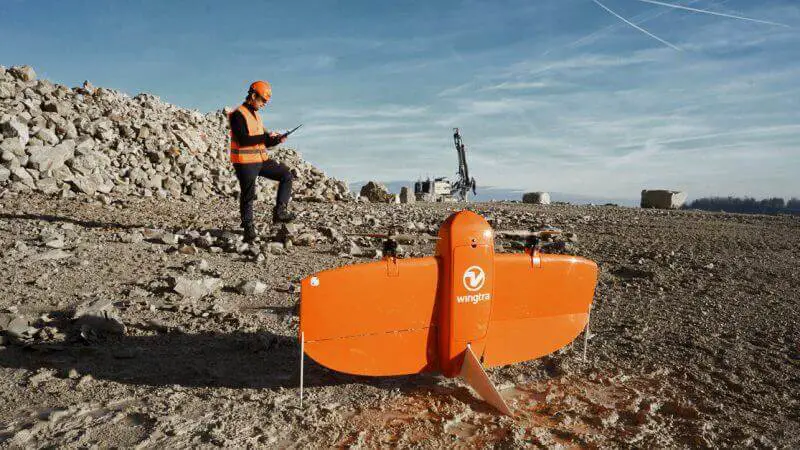
| Price | ~$20,000 (drone only) | $12,000-$80,000 depending on order specs |
| Weight | 3.7 kilograms (without payload) |
| Flight Time | 1 hour |
| Application | Multispectral Mapping, 3D Modelling, Photogrammetry |
Notes:
- Depending on your country, mapping can be a heavily regulated industry and may require licensing
- The drone is designed to operate in temperatures ranging from -10 to +40 °C (14 to 104 °F) and is resistant to wind speeds of up to 12 m/s (27 mph) sustained and 18 m/s (40 mph) gusts.
- The WingtraOne GEN II has more recently been equipped with a WiFi module that ensures full compliance with existing and upcoming Remote ID regulations.
Complex Level
Finally, we’ll take a look at some of the most expensive drones there are. Now we’re outside my realm of expertise here, but regardless we’ve got to satisfy our curiosity.
Schiebel Camcopter S-100
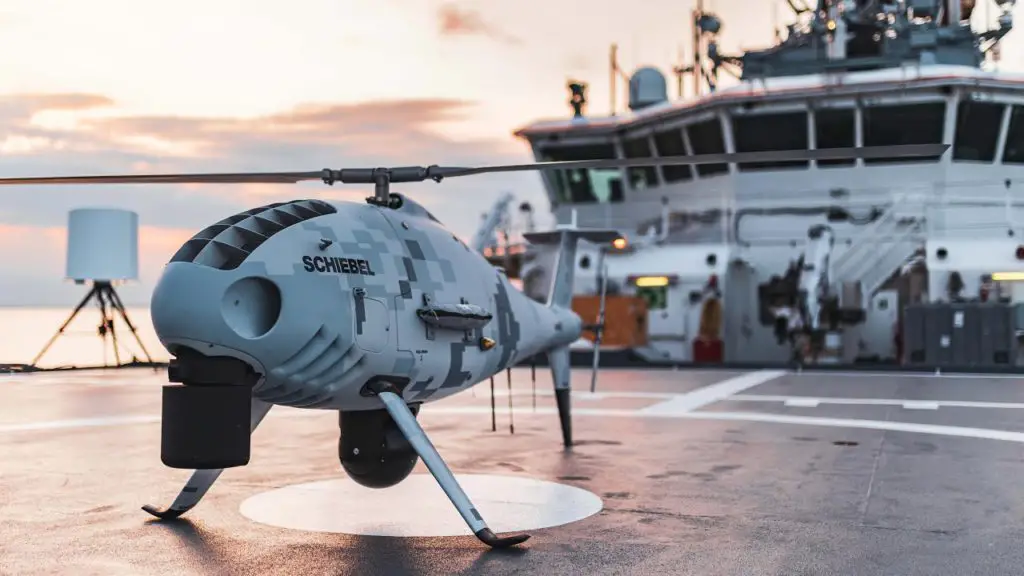
The Camcopter S-100 is our first entry with a helicopter design. The drone is significantly larger and heavier than anything we’ve covered so far, and is generally used in militaries around the world.
It operates in both day and night conditions, under adverse weather, and can cover a range out to 200 km, on land and at sea. The S-100 navigates automatically via pre-programmed GPS waypoints or can be manually operated with a pilot control unit.
It uses “fly-by-wire” technology controlled by redundant flight computers, allowing the UAV to complete its mission automatically even in complex electromagnetic environments. The drone’s carbon fiber and titanium fuselage allows for a wide range of payload and endurance combinations.
| Price | ~$400,000 (drone only) |
| Weight | 110 kilograms (without payload) |
| Flight Time | 6 hours |
| Application | Military, Surveillance, Reconnaissance |
Boeing Insitu ScanEagle
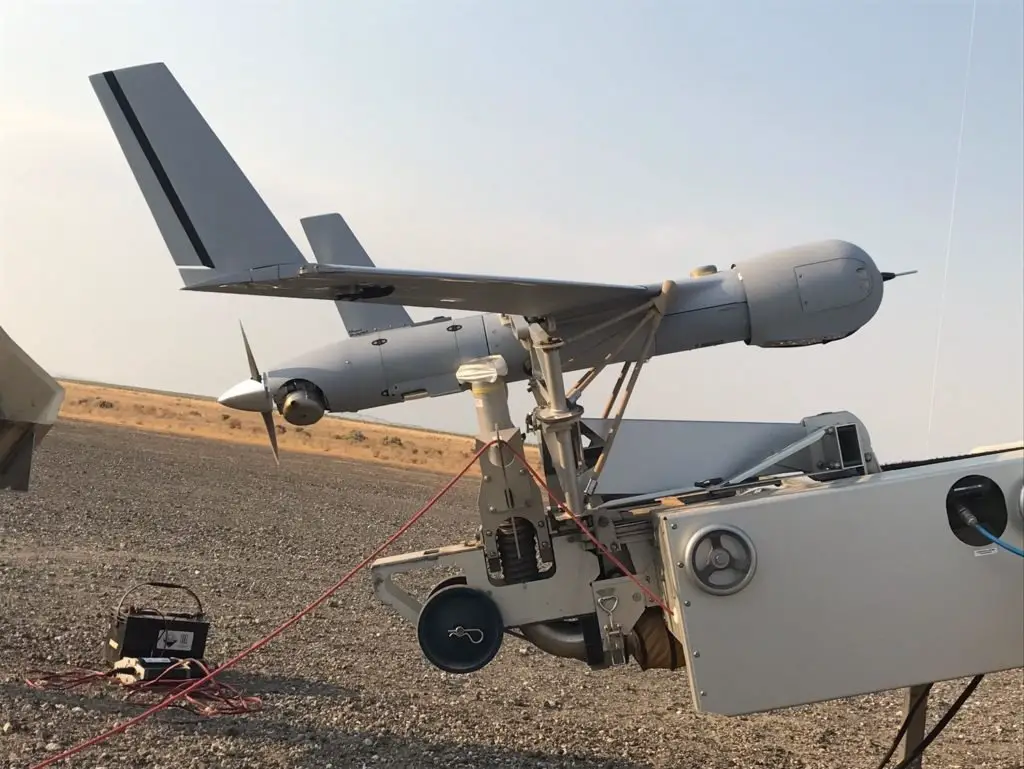
The ScanEagle is the first fixed-wing aircraft on this list and it is the most expensive by far. It’s a lightweight, endurance drone used for reconnaissance.
What is interesting about the ScanEagle is its take-off and landing procedure. The drone is shot into the sky via a sling mechanism, like a sling-shot.
When it’s time to land, the aircraft flies into a wire that catches it by its wing. Like flying into a net.
It’s crazy and you’ve got to see it to believe it. Here’s an example from the LagunaGTO YouTube channel:
| Price | ~$3,200,000 (drone only) |
| Weight | 14 kilograms (without payload) |
| Flight Time | 24 hours+ |
| Application | Military, Surveillance, Reconnaissance, Mapping, Inspection |
Conclusion
I hope this gives you a good idea about what a professional drone can cost. There’s a wide range of prices and it’s always best to be prepared for what you might spend depending on your business goals.
If you have a drone business or are looking at starting, check out my other article about marketing a drone business, 5 Under Utilized Methods To Market A Drone Business

